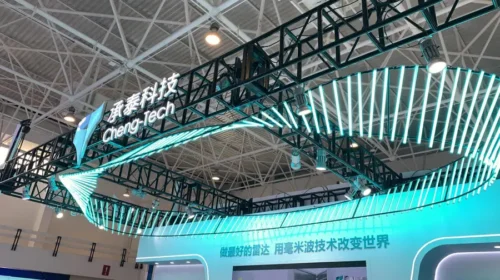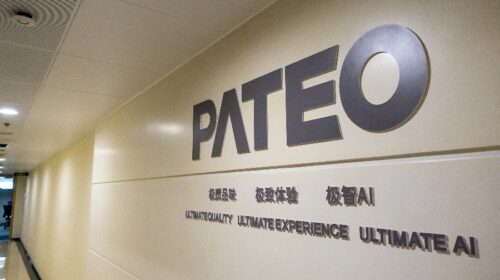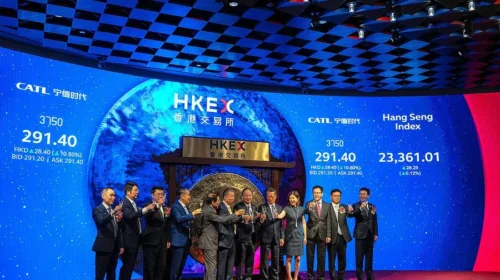Time for a shift: SenseTime formalizes pivot to generative AI

The company, once a leader in traditional artificial intelligence with a focus on visual recognition, has formally restructured to focus on generative AI
Key Takeaways:
- SenseTime has completed its strategic restructuring that sets generative AI as a primary growth driver
- The AI company is making the shift into an area with better mass market potential as it remains deeply in the red
By Xiao Lin
SenseTime Group Inc. (0020.HK) was one of China’s earliest pure artificial intelligence (AI) companies, making a name for itself in facial recognition. But as that technology becomes more controversial due to its use in surveillance, the company is sensing it’s time for a change and is going full throttle into the less controversial field of generative artificial intelligence (GenAI).
That shift was the subject of a sweeping new restructuring plan detailed in an internal memo last week from Chairman and CEO Xu Li, discussing the company’s prioritization of GenAI as its new primary growth driver.
“The organizational adjustment reflects a redefinition of the company’s strategic direction and core focus areas to better address the opportunities and challenges presented by AI 2.0,” Xu said in an internal letter on Tuesday, adding that the restructuring is now complete.
Central to the company’s strategy is the adoption of a ‘1+X’ structure, as disclosed in a filing with the Hong Kong stock exchange on Wednesday. Under this model, the ‘1’ represents SenseTime’s core capabilities in foundational AI models and cloud technology, which serve as the backbone of its operations. The ‘X’ refers to customized, industry-specific solutions targeting sectors such as automotive, healthcare, robotics and retail.
This strategic shift formalizes SenseTime’s move away from its traditional AI products — most notably its controversial Smart City business using facial recognition, which has faced declining revenues and heightened scrutiny in the West due to its use in surveillance applications.
Xu didn’t mention those sensitivities in his letter, and instead emphasized that profitability was the restructuring’s long-term goal. “Through this restructuring, we will upgrade the group into an organization with sustainable profitability and strong growth potential, laying a solid foundation for long-term development,” he said.
Investors didn’t seem too moved by the shift, which the company has discussed before. SenseTime’s stock was largely unchanged in the two days after the announcement. But it shot up 14% in Friday trade last week, suggesting perhaps some were starting to take note and welcoming the move into a less controversial AI area that also has greater mass market potential. Even after that rally, the stock is still about 75% down from its peak in early 2022.
As losses continue and competition intensifies, SenseTime’s shift comes as no surprise, especially given recent reports suggesting that the company has initiated another round of layoffs. Since the launch of OpenAI’s ChatGPT in late 2022, SenseTime, which was a market leader in traditional AI, has been following the trend into such GenAI.
The number of GenAI users in China reached 230 million by the end of June 2024, accounting for roughly one in every five internet users in the world’s largest online market, according to a recent report from the China Internet Network Information Center, a state-run agency. China had about 1.1 billion internet users by the end of June.
While that consumer market is huge in terms of users, SenseTime appears to be more focused on business GenAI customers who are typically more willing to spend on technology that can give them a competitive advantage.
Competitive field
SenseTime is just one in a growing number of pure AI startups being cranked out in China. A white paper by OxValue.AI, a spin-out from Oxford University, listed eight Chinese companies among the global Top 30 AI startups in terms of value.
SenseTime was founded in 2014 by the late Chinese University of Hong Kong professor Tang Xiao’ou, who began applying computer vision technology to practical use in the early 2000s by using facial recognition to classify and organize photo albums of his son.
As the technology evolved, computer visual AI was at the center of the company’s core Smart City offering, widely utilized in surveillance systems such as cameras, which have been adopted in public security systems across China. That application caught the eye of U.S. government officials, who in October 2019 added SenseTime to a blacklist limiting its access to U.S. technology for allegedly facilitating surveillance linked to the controversial Xinjiang region.
Despite that, the company’s business continued to thrive during the pandemic as China extensively utilized its technology to monitor infections and control the spread of the Covid-19 virus. Riding that wave of government-driven spending, SenseTime’s annual revenue climbed to a peak of 4.7 billion yuan ($663 million) in 2021, more than double the 1.85 billion yuan in 2018.
Then in December 2021, just before its planned Hong Kong IPO, Washington again sanctioned SenseTime for similar reasons. But this time U.S.-based investors were barred from owning or trading in SenseTime’s stock, effectively excluding them from participating in the IPO. SenseTime, which was valued at HK$139 billion ($18 billion) at that time, delayed its IPO by about two weeks, though it eventually raised HK$5.78 billion.
As the pandemic waned and China’s economy slowed, reduced government spending on security and surveillance caused SenseTime’s annual revenue to decline for the first time in 2022. By the first half of this year, the contribution of revenue from its Smart City business had fallen from its peak of 45.6% of the total to less than 10%.
SenseTime has been shifting away from its reliance on Smart City since 2022 towards GenAI. While it hasn’t officially abandoned the business, Smart City is notably absent from the company’s new restructuring plan.
Ten years after its founding, SenseTime continues to lose money. Its losses have narrowed, though the company is expected to keep losing money through at least 2026. It reported a loss of 2.5 billion yuan in the first half of this year, down from a 3.1 billion yuan loss a year earlier. As part of cost-cutting efforts, the company’s employee headcount dropped from a peak of 6,114 in 2021 to 4,672 by the end of June.
Under the new framework, GenAI has become the company’s core business, divided into business units focusing on different segments, each with its own independent CEO, as well as more flexible incentive mechanisms and financing channels.
SenseTime’s GenAI transformation has been rapidly advancing over the last two years. It generated 1.05 billion yuan in the first half of this year, more than triple a year earlier, accounting for more than 60% of its total of 1.74 billion yuan in revenue for the period.
SenseTime’s smart auto business, which supports autonomous driving and in-car interactions, is one of its most promising areas, generating 168 million yuan in revenue in the first half of this year, double the year-ago period, accounting for nearly 10% of total revenue. The company hasn’t mentioned other GenAI business segments in its reports, meaning they probably have yet to generate meaningful revenue.
To subscribe to Bamboo Works weekly free newsletter, click here






